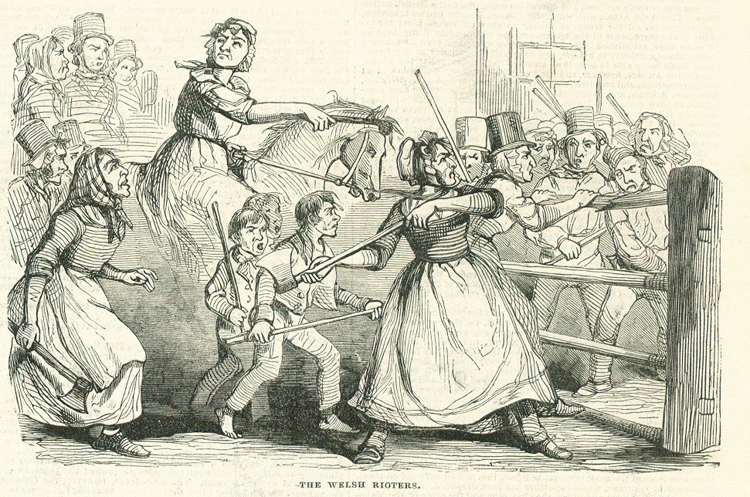Throughout Europe, before the advent of systems of criminal justice and policing, lots of unsavoury behaviour was punished in an ad hoc way by the community itself. This was particularly true of behaviour such as adultery, domestic abuse, or a father failing to look after his children.
In Wales, since at least the 19th century but possibly for centuries earlier, this punishment often took the form of the Ceffyl Pren, or “wooden horse”. This was a wooden structure to which the offender was tied and transported around the village or district, exposing him to the opprobrium (and often the pelting and punching) of his neighbours.
The punishment was led by a jury of men who, curiously enough, sought to remain anonymous by blackening their faces and, most crucially, by wearing women’s clothes. This tradition of administering justice while cross-dressing continued in Wales, cropping up again most famously in the Rebecca Riots of 1839–1844, in which protesters destroyed toll gates while wearing women’s clothes and calling themselves the Merched Beca, or “Rebecca’s daughters”.
